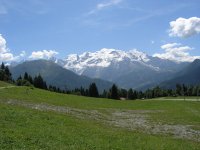Just doing some comparing with existing and new Olympus digital cameras
SP-310 (7MP) /350 (8MP) - NEW
CCD 1/1.8"
SP-500 (Superzoom) (6MP) - NEW
CCD 1/2.5"
Stylus 600 (6MP) - NEW
CCD 1/2.5"
C-7070 (7MP)
CCD 1/1.8"
How important is CCD size? Is the Nikon CCD better than the Canon, Olympus (or vice versa)??
If several cameras all have the same CCD size, is it true that the model with the fewer megapixels should give the best 'quality' photo?
Bottomline how important is the CCD in shopping for a camera
SP-310 (7MP) /350 (8MP) - NEW
CCD 1/1.8"
SP-500 (Superzoom) (6MP) - NEW
CCD 1/2.5"
Stylus 600 (6MP) - NEW
CCD 1/2.5"
C-7070 (7MP)
CCD 1/1.8"
How important is CCD size? Is the Nikon CCD better than the Canon, Olympus (or vice versa)??
If several cameras all have the same CCD size, is it true that the model with the fewer megapixels should give the best 'quality' photo?
Bottomline how important is the CCD in shopping for a camera





